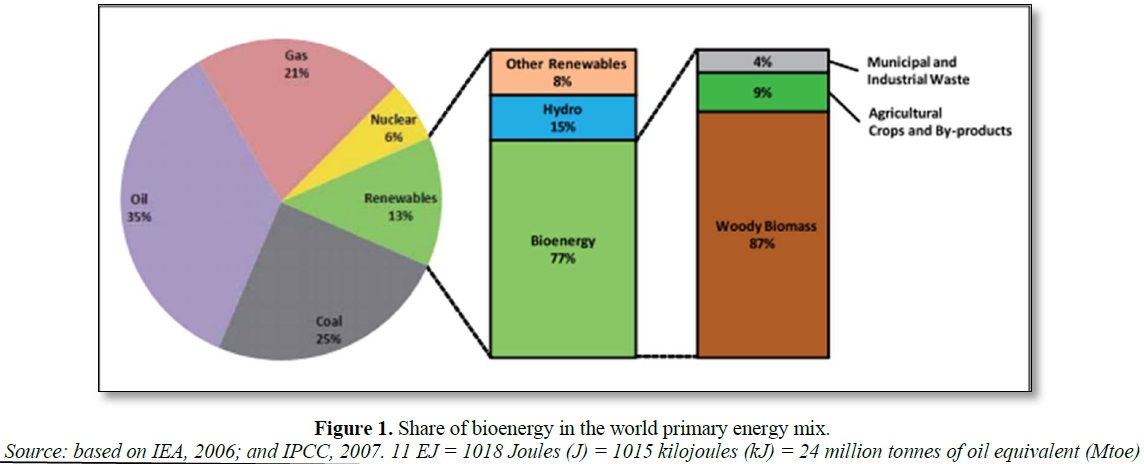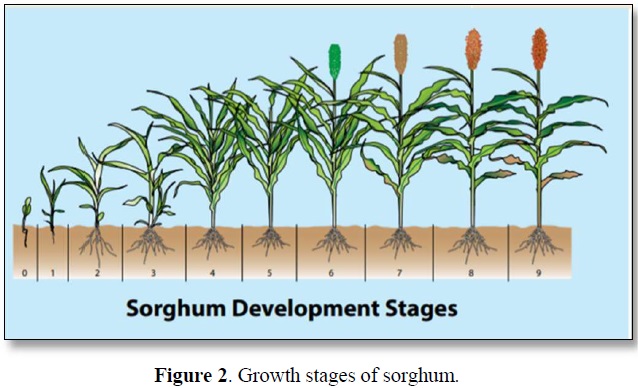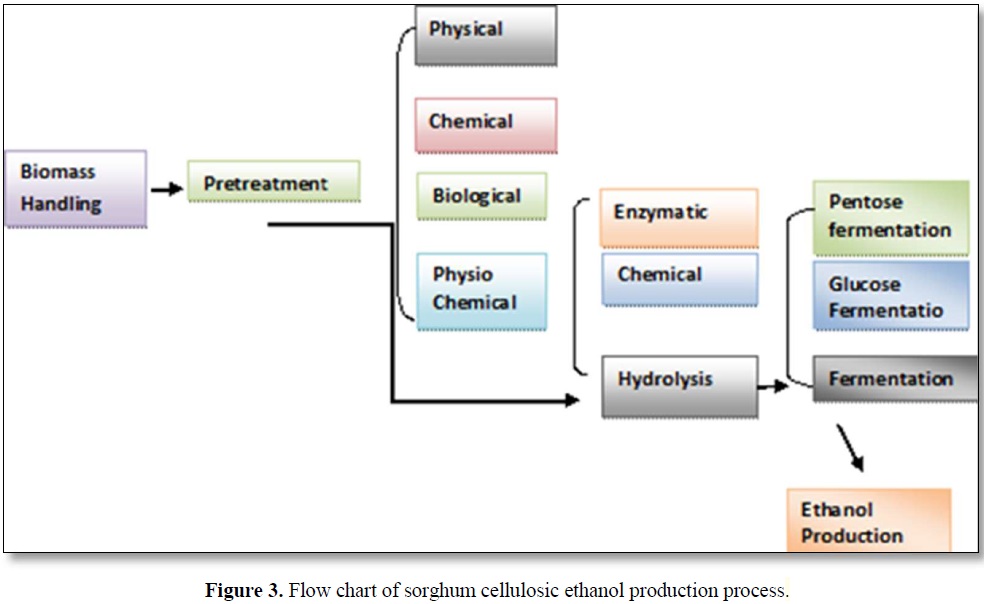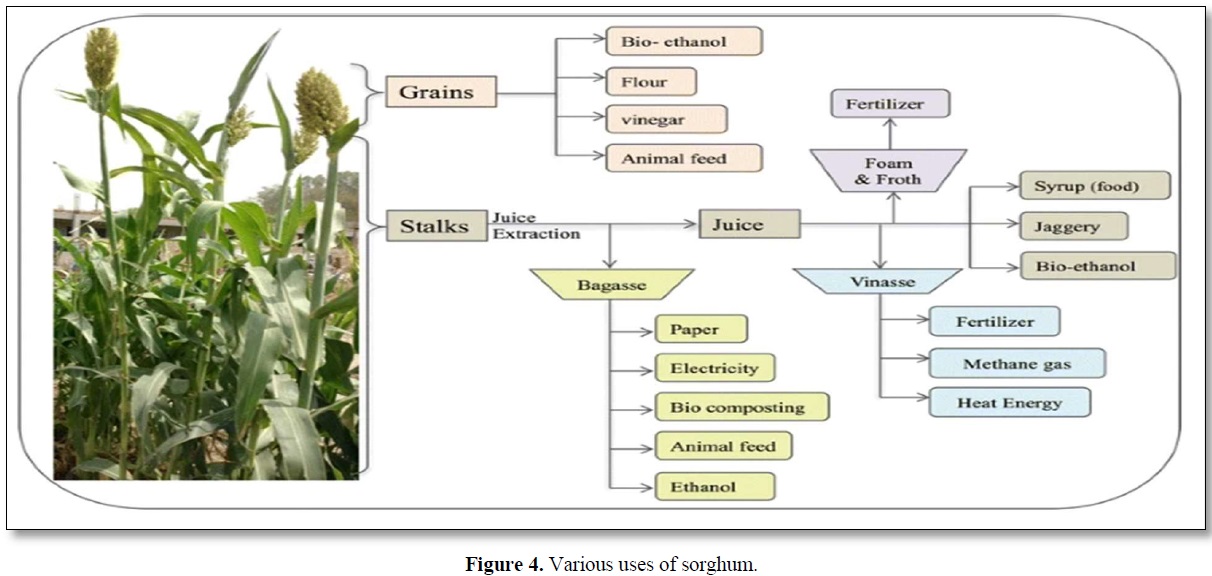-
Publish Your Research/Review Articles in our High Quality Journal for just USD $99*+Taxes( *T&C Apply)
Offer Ends On
Hina Saleem*, Hafeez Ahmad Sadaqat, Humera Razzaq and Javeria Ramazan
Corresponding Author: Hina Saleem, Department of Plant Breeding and Genetics, University of Agriculture, Faisalabad 38040, Pakistan
Received: May 25, 2022 ; Revised: July 11, 2022 ; Accepted: July 14, 2022
Citation: Saleem H, Sadaqat HA, Razzaq H & Ramazan J. (2022) Sorghum as a Potential Source of Sustainable Bioenergy Crop. J Agric For Meterol Stud, 1(1): 1-6.
Copyrights: ©2022 Saleem H, Sadaqat HA, Razzaq H & Ramazan J. This is an open-access article distributed under the terms of the Creative Commons Attribution License, which permits unrestricted use, distribution, and reproduction in any medium, provided the original author and source are credited.
Views & Citations
Likes & Shares
Abstract
Sorghum is a promising crop for biofuel creation. It is a C4 crop with low input requirements. Abundance of sugars in its stalks. Considering this, many studies have been done to create genetic and genomic resources for sorghum. In this paper, we examine different characteristics of sweet sorghum that make it an optimal possibility for biofuel feedstock, and give an outline of variety, benefits accessible for designing sorghum crop for improvement. At long last, the advancement made up until this point, in identification of qualities/quantitative attribute loci (QTLs) significant for agronomic characteristics. Here natural attributes like abiotic strain tolerance, various genetic base, viable seed industry, and sound breeding system make sorghum an ideal candidate for setting up an efficient and low-cost biofuel enterprise. Scientists are exploring methods to exploit forage, and biomass sorghums as climate-smart power crops. In this context, traditional breeding has played a vital function in developing excessive-yielding sorghum cultivars. For biomass sorghum, stem compositional analysis allows display screen low lignin and high polysaccharide types as feedstocks for biofuels. Current tools of phenomics, genomics, proteomics, and genome enhancing are key gamers of designing green bioenergy sorghum.
Keywords: Sorghum, Feedstock, Cultivar, Phenomics, Proteomics
INTRODUCTION
Climate change is a challenging factor that has affected the mankind since past few decades and therefore the constant supply of sustainable energy is the dire need of time. Biomass is potentially the largest contributor for fulfilling the energy demand in a sustainable manner. It has great significance for enhancing the production of electricity, heat and fuels for the transport. If biomass is carefully managed it can supply with:
Biomass, today supplies some 50 EJ1 globally, which represents 10% of global annual primary energy consumption. This is mostly traditional biomass used for cooking and heating (Figure 1).

Every year from a number of crops a large volume of lignocellulosic biomass is produced. This has increased the crop use efficiency. Various crops have now entered in the bioenergy and biomass production cycle making many countries self-sufficient in terms of energy. Crops at present provides with as the best source of alternative form of energy.
The utilization of natural waste and farming/forestry deposits, and of lignocellulosic crops that could be developed on a more extensive range of land types, may alleviate land and water interest and lessen competition with food. Energy crops acts as a filter system provides the supplemental yields, controls pollution as they eliminate pesticides and abundance compost from surface water before it dirties groundwater or streams/waterways. They can secure a stream's bank and water from disintegration, siltation, and factories spill.
They likewise require less composts, herbicides and insecticides than traditional crops, this decrease in herbicide and pesticide use. One more ecological advantage from the utilization of energy crops is a diminishing in emanations. In contrast to non-renewable energy sources, plants developed for energy crops absorbs carbon dioxide (CO2) delivered during their combustion/use.
Designing climate-resilliant energy crop with optimized composition to suit the, consumers the industry and the growers is the backbone of cost-competitive biofuel industry. C4 grasses provide a perfect fit to this definition owing to higher, productivity, photosynthetic rate, and broader genetic base of germplasm. Sorghum is a short duration crop of about 3-4 months and produces higher biomass yield with less inputs. These characteristics make sorghum a popular biofuel feedstock [1]. Sorghum has different end-use types including biomass, forage, sweet, and grain sorghums. Energy sorghum including biomass and sweet type varieties is the most efficient and climate-smart feedstock being able to grow with less inputs on marginal lands under harsh climatic conditions and having ability to utilize more sunlight [2-4]. The growth stages of sesame are illustrated in Figure 2 & Table 1.


SORGHUM BIOMASS POTENTIAL
Sorghum biomass is impacted by genetics and ecological elements [5]. The distinguishing proof of variety in phenotypic, hereditary, underlying, and physiological characters of energy sorghum is fundamental to its improvement. Sorghum biomass improvement model depends on coordinating a few genomic-helped strategies with phenomics approaches. Normal field-based choice of high biomass sorghum relies on describing biomass-related morphological characteristics like days to flowering (days subsequent to planting), plant height, new biomass yield, dry matter, and dry matter yield, plant growth habit, stem width, leaf number, leaf area, leaf length, leaf point and leaf area index, and so on [6]. A few investigations report on morphological variety evaluation of sorghum for biomass characteristics in the field climate [7,8].
Precise and far reaching phenotypic information are the pattern to clarify hereditary components fundamental complex quantitative biomass qualities. Since biomass-related qualities are estimated through dangerous inspecting, recording morphological information during the whole developing time of energy sorghum is conceivable just a single time. Manual, nondestructive examining for these characteristics over complete advancement of sorghum is unthinkable. When contrasted with moderately less expensive innovations of genomic choice, affiliation planning and GWAS, dependable phenotyping is difficult and costly. Around 20 years back while genotyping strategies were quick progressing; improving phenotyping approaches was totally disregarded. As of late, there has been a developing interest in creating successful sorghum phenotyping techniques. The work began with advancing high-throughput phenotyping frameworks for model plants under controlled conditions. Later on, field-based phenotyping stages were contrived for short height crops [9]. Over the most recent 5 years, various methodologies have been excogitated with promising abilities of recording sorghum phenology in field conditions. A portion of these
incorporate different UAS stages [10,11], field-based automated phenotyping framework [12], automated airborne framework [13], ultrasonic sensors [14], the light identification and running (LiDAR) [15], the hour of flight cameras [16], tomography imaging [17], Kinect v2 camera [18], RGB and NIR imaging [19], and Phenobot 1.0 [20]. The cutting edge phenomics devices produce huge measure of information that is being interpreted by means of AI factual methodologies into quality depictions, pertinent to sorghum growers [21].
Production of biomass from stem of sorghum
The composition of biomass extracted from grain, forage and sweet sorghums has been very much characterized [22]. Exploitation of sorghum as biofuel was started in 1980s, which prompted the improvement of photoperiod-sensitive energy sorghum hybrids [23]. These are high biomass yielders [24]. Being newly introduced, the stem structure information on energy sorghum is still limited and restricted. Up till now, a greater part of research on sorghum biomass feedstock has focused on more on improvement in developing better yield than the quality parts. In this way, there is a need to precisely lead the biochemical analysis, since stem structure is the fundamental component affecting biofuel yield.
Plant cell walls are the fundamental constituents of biomass that give strength and limited plasticity to cell. The cell wall fills in as an intense physical barrier, ensuring inside of the cell and its contents against biotic and abiotic stresses. It is a complex structure made out of polysaccharides and proteins, which are significant benefactors of biofuel quality and energy conversion process. The polysaccharides are cellulose (a polymer of glucose), pectic mixtures (polymers of galacturonic corrosive), and hemicellulose (a polymer of an assortment of sugars including xylose, arabinose, and mannose). Cellulose is the biggest source of glucose for biofuels. Glucuronoarabinoxylan (GAX) hemicellulose complex is connected to lignin. Since lignin part of plant cell wall gives structure, it can't be changed over to carbohydrates and thus is recalcitrant to conversion process. Moreover, ash content likewise reduces biomass to biofuel change response. Certain constituents of cell wall are water solvent like sugars, proteins, amino acids, mixed linkage glucans, and phenolic glycosides, while chlorophyll, lipids, and waxes are water-insoluble fixings that need ethanol extraction.
Various experiments have reported different methodologies for compositional analysis of energy sorghum leaves and stem. In some sorghum genotypes, extent of cellulose can fluctuate somewhere in the range of 27 and 52%, while the content of hemicellulose content is 17-23% and lignin content is 6.2-8.1% [25,26]. Alongside the biomass yield, low lignin, high cellulose, and hemicellulose substance are likewise the helpful determination credits for energy sorghum genotypes [27]. Such sorghums display wide varieties in biomass structure [28]. Presently, near infrared spectroscopic (NIR) analysis is regularly utilized for high-throughput calculation of biomass structure [29].
Cellulosic bioethanol creation requires three fundamental stages: pretreatment, hydrolysis and maturation [30] (Figure 3). Pretreatment is performed to fractionate lignocellulose into various parts through physical (bubbling, steaming, and ultrasonication), compound (corrosive, antacid, salts, and so on), physiochemical (ammonium fiber blast or AFEX), and natural techniques (microbes and parasites). It expands porosity and surface space of the substrate. During hydrolysis, nonstructural carbs are corrupted in to sugars. Chemical based hydrolysis is liked over corrosive hydrolysis being a gentle and savvy measure.

Sweet sorghum as a multipurpose crop. The various uses of sweet sorghum juice, grains, and other byproducts have been illustrated below (Figure 4).

GENES AND QTLs GOVERNING BIOFUEL-RELATED TRAITS
Associating hereditary units like QTLs to the entirety genome can give data about putative applicants administering explicit qualities. Mace and colleagues [31] incorporated the entire genome grouping data with sorghum QTLs by projecting 771 QTLsonto sorghum agreement map, consequently giving a valuable asset for planning productive procedures for marker-helped rearing. Afterward, a chart book of QTLs for biofuel-related attributes in sorghum regarding their chromosomal areas was assembled. It incorporates 858 biofuel-related QTLs that can be straightforwardly utilized in sweet sorghum reproducing to accomplish better returns, more biomass, higher stem solvent sugars on the minimal lands, etc. [32]. A relative genomic data set named TeComparative Saccharinae Genome Resource (CSGR)- QTL has been intended for cross-usage of the data among individuals from Saccharinae clade and different clades of grasses [33]. Te data set contains QTL data for Sorghum, Saccharum, Miscanthus, also, rice. Te term "Biofuel Syndrome" is utilized to allude to the gathering of characteristics in sweet sorghum (flowering time, plant design, and biomass change efficiency) that are significant for biofuel creation [34]. Underneath, we sum up the investigations that have been completed to comprehend the hereditary premise of these characteristics in sweet sorghum.
CONCLUSION
Sorghum, with its variety of versatile components and low info prerequisites, is one of the main crop for biofuel feedstock. It can possibly address two significant issues. Initially, it can assume a critical part in addressing the developing requirement for sustainable power to uproot petroleum derivative based energy assets. Besides, rather than rivaling food crops for arable land, it will rather help in protection of negligible grounds by changing them over to horticultural land. In any case, Sorghum shows tremendous hereditary variety and assets towards area explicit climatic conditions or changing climatic conditions, and measure of fermentable sugars and grain yields fluctuate impressively in various sweet sorghum cultivars. Subsequently, screening and choice of suitable assortments for every area is basic for ideal outcomes.
DATA AVAILABILITY
The data that support the findings of this study are available on request from the corresponding author.
REFERENCES
No Files Found
Share Your Publication :